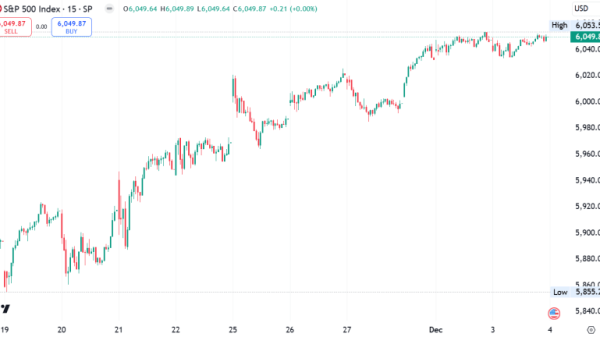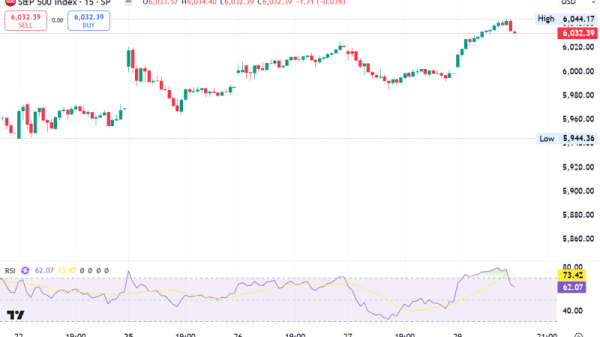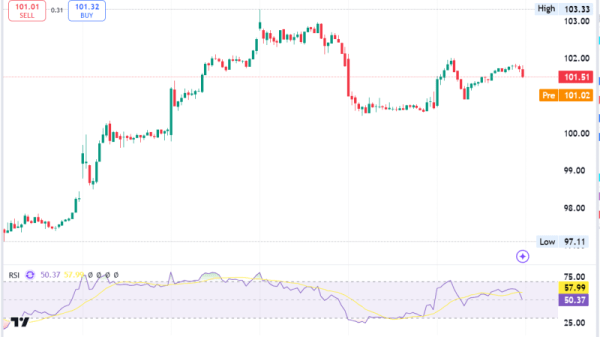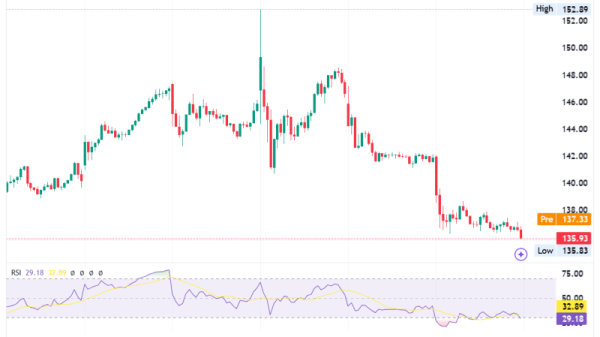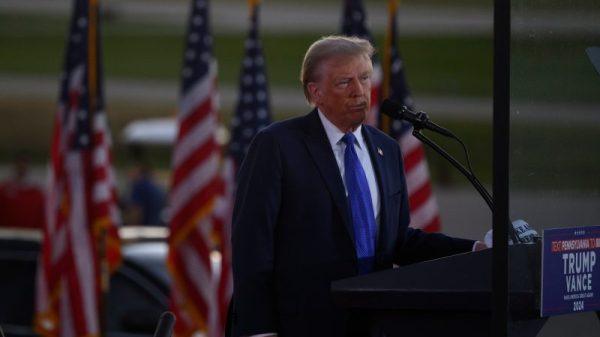LONDON (Reuters) – From China to Europe, Canada to Mexico, world markets are already reeling from Donald Trump’s promise to jack up tariffs when he becomes U.S. president in less than two weeks.
Trump has pledged tariffs of as much as 10% on global imports and 60% on Chinese goods, plus a 25% import surcharge on Canadian and Mexican products, duties that trade experts say would upend trade flows, raise costs and draw retaliation.
The scale and scope remains to be seen, but the road ahead is bumpy. Here’s a look at some markets in focus right now.
1/ FRAGILE: CHINA
“China is likely to be the primary target of the Trump trade wars 2.0,” say Goldman Sachs. Investors are already getting ahead, forcing the country’s stock exchanges and central bank to defend a tumbling yuan and stocks.
China’s tightly controlled currency is at its weakest in 16 months, with the dollar trading above the symbolic 7.3 yuan milestone which authorities had defended.
Barclays (LON:BARC) sees the yuan at 7.5 per dollar by end-2025, and sliding to 8.4 in a scenario in which the U.S. imposes 60% tariffs.
Even without tariffs, the currency has been hurt by a weak economy pushing down Chinese government bond yields — widening the gap with elevated U.S. Treasury yields.
Analysts expect China to let the yuan weaken further to help exporters manage the impact of tariffs, but gradually.
A sudden plunge would bring lurking fears of capital outflows to the fore, and jolt confidence, already bruised after stocks just saw their biggest weekly fall in two years.
Investors in other major Asian exporters such as Vietnam and Malaysia are also nervous.
2/ EURO’S TOXIC MIX
The euro has slid over 5% since the U.S. election, the most among major currencies, to two-year lows around $1.04.
JPMorgan and Rabobank reckon the single currency could fall to the key $1 mark this year, as tariff uncertainty weighs.
The U.S. is the European Union’s most important trading partner, with $1.7 trillion in two-way goods and services trade.
Markets anticipate 100 basis points of European Central Bank rate cuts this year to bolster a lackluster economy. But traders, speculating that tariffs could boost U.S. inflation, anticipate just 40 bps of Fed rate cuts, enhancing the dollar’s appeal over the euro.
A weakening Chinese economy also hurts Europe.
Tariffs hitting China and the EU at the same time could be a “very toxic mix for the euro”, said ING currency strategist Francesco Pesole.
3/ CAR TROUBLE
In Europe, auto stocks are also particularly sensitive to tariff-headlines.
On Monday, a basket of auto names briefly shot up almost 5% on a Washington Post report that Trump aides are exploring import duties only for critical imports but then fell as Trump denied the article.
The swings highlight investors’ touchiness on an already-depressed sector that has seen its shares shed a quarter of their value since an April 2024 peak and their relative valuations plunge.
Barclays’ head of European equity strategy Emmanuel Cau said autos are among the trade-exposed, consumer sectors he is watching. Others include staples, luxury goods and industrials.
A Barclays basket of the most tariff-exposed European stocks is down about 20%-25% relative to the main market in the past six months.
Euro zone economic weakness could also prolong European equities’ underperformance. The STOXX 600 rose 6% in 2024, while the S&P 500 index surged 23%.
4/ GOING LOONIE
Canada’s dollar is near its weakest in over four years, having fallen sharply after Trump in November threatened a 25% tariff on Canada and Mexico until they clamped down on drugs and migrants.
It has potential to fall further. Goldman analysts reckon markets may only be pricing about a 5% chance of such a tariff, and while they think this is unlikely to materialise, prolonged trade talks could keep risks alive.
A fully-fledged trade war necessitating additional Canadian rate cuts could push the loonie to the 1.50 mark against the U.S. dollar, said ING’s Pesole. That would imply a further weakening of almost 5% from around 1.43 now.
Canadian Prime Minister Justin Trudeau’s resignation further complicates the outlook.
5/ VOLATILE PESO
The Mexican peso was already down 16% against the dollar in 2024 when Trump was elected, so a lot of news – both good for the dollar and bad for the peso – was priced in.
The peso’s 2024 performance, a 18.6% drop, was its weakest yearly showing since 2008. Besides the threat of tariffs from the U.S. – the destination of 80% of Mexico’s exports – a controversial judicial reform also affected the currency.
Monday’s tariff news, later denied by Trump, sent the peso up as much as 2% before it pared gains, highlighting that volatility may continue as trade along the U.S. southern border remains a target for the President-elect.

